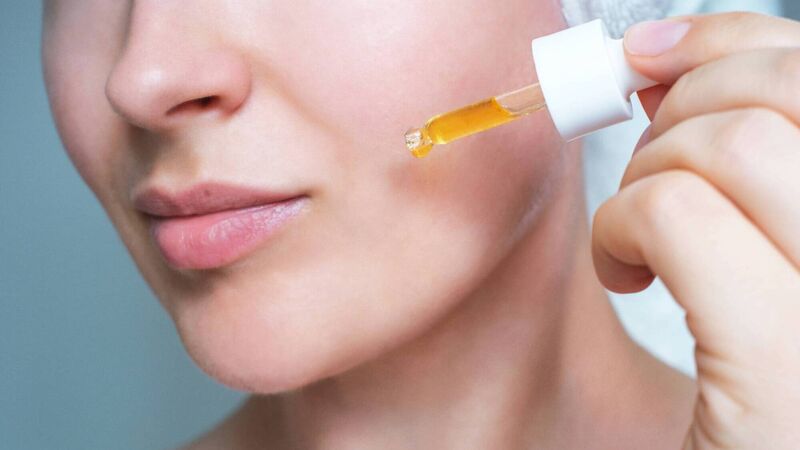The Skin Nerd: Want to start using retinol? We debunk six myths about vitamin A

Skin Nerd: Recently named as 2022’s biggest beauty trend, retinol accumulated over 1.2 billion views on TikTok 9.2 million Google searches last year.
Recently named as 2022’s biggest beauty trend, retinol accumulated over 1.2 billion views on Tiktok and 9.2m Google searches last year — a great achievement for an ingredient that is anything but new. The most evidence-supported topical ingredient for reducing the visible signs of ageing, sales of retinols in department stores and specialty retailers increased 27% last year and yet, despite their rising popularity, many still find retinols confusing and hard to use.
Retinoids can be traced back to ancient Egypt, where liver (which contains retinoids) was used to treat night blindness. Retinoids were then introduced into the cosmetics industry via photoaging treatments over two decades ago. Now, retinol is a powerful rockstar ingredient that promises skin results aplenty if you start slow and steady. A topical derivative of vitamin A, retinol has been clinically proven to stimulate the fibroblast cells, which are responsible for collagen, hydration and cellular turnover — helping the skin to look more youthful.
Despite their many merits, we understand that embarking on your retinol journey can seem daunting when you’re faced with the side effects that might arise with misuse — especially if you have sensitive skin. Our philosophy when it comes to retinol is that less really can be more. Going in too hard with a strong formula can disrupt your delicate moisture barrier, which is why a progressive and skin-respectful approach is key to introducing vitamin A into your skincare routine. Knowledge is also power when it comes to retinol and to help you tackle your retinol roadblocks head-on, today we will be confronting the major areas of misinformation surrounding the ingredient and its uses.
Myth 1: All types are the same
Head to any skincare counter and you are likely to be presented with many different products with the word “retin” emblazoned across the packaging. To assume all retinoids are the same would be an easy mistake to make, but what is the difference and how do you select which type is for you? The term “retinoid” is an umbrella term used for all derivatives of retinol. Topical retinol and retinaldehyde are precursors of retinoic acid — the most potent version of retinol. Before they can work on the skin, they need to be converted into retinoic acid. Prescription formulas contain retinoic acid, the most potent strength of the ingredient but requires medical assistance to use. With consistent use, milder, non-prescription alternatives like retinyl palmitate can also give incredible results over time.
Myth 2: I am too young to start
This depends on your skin, but as retinol can be ideal for addressing problematic skin it is often recommended to those in their 20s for reasons other than anti-ageing. One thing to consider when it comes to timing is that retinols are not recommended for those that are pregnant or breast-feeding by some brands, always check with manufacturers guidelines before use.
Myth 3: Retinol can only be applied at night
All forms of retinol (apart from esters) have been shown to cause photosensitivity and so I suggest keeping these for nighttime use and always using a broad-spectrum SPF during the day (which I am sure you are doing anyway). Retinoids can also break down in sunlight, which is another reason they are most effective when used at night. If you do want to wear one during the day, choose a formula containing retinyl palmitate such as Skingredients Skin Protein Anti-Ageing Retinoid Serum (€49, theskinnerd.com) and remember to apply SPF every two hours throughout the day.
Myth 4: Retinol weakens skin
Many people are put off retinol as they are worried that it will thin their skin. Now this is true, BUT it only thins the stratum corneum (the very top layer) which is comprised of dead skin cells. This is seen as positive as unhealthy skin can be overthickened or too thin and therefore retinol helps to stabilise it. A major plus point (which helps to counteract this) is that retinol has been scientifically proven to build up and thicken the collagen layer in the dermis, which makes the skin stronger and healthier.
Myth 5: Irritation means you need to stop
Along with the plethora of skin benefits, retinol also poses some challenges due to its potential for skin irritation, sometimes referred to as a “retinoid reaction”. When applying vitamin A to non-acclimatised skin, the skin cells can renew themselves too quickly for the skin to catch up, leading to peeling skin and an impaired barrier. It is normal (and quite expected) to get a mild reaction such as some redness and dryness. The best way to minimise side effects is by building up usage slowly. Acclimatise your skin by beginning with once a week use and consider using any acids (such as salicylic) in your routine on alternative nights. Like all skincare, it is all about paying attention to your skin and doing what it needs — everyone’s skin and reactions to ingredients are different. Eventually, though (and often within three weeks) your skin should calm down and adapt to this new, faster rate of renewal. Do note — I am talking about mild discomfort — think flushed, slightly uncomfortable, or lightly peeling skin. If your skin is very uncomfortable, stop using it and discuss with your skincare specialist.
Myth 6: Results are instant
It can be hard to say how long it will be before you see visible results as every person’s skin is different. The normal person’s skin cell cycle is 28 days, which is why you’re most likely to notice a difference in your skin around the one-month mark. However, you might see visible skin results sooner or later than that — it also depends on the type of vitamin A and how consistently you use the active. You might be surprised to learn that with prolonged usage, it’ll be clear to a facialist if you have been using vitamin A due to noticeable skin clarity.
Read More
CONNECT WITH US TODAY
Be the first to know the latest news and updates






